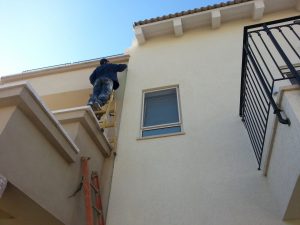
A slip-and-fall accident is one of the leading causes of unintentional injury and death in the United States. In fact, the National Safety Council identifies slips and falls as the cause of death for 14,500 people each year, with adults 65 years of age and older accounting for nearly 80 percent of those deaths.
Preventing slips and falls is a serious issue for all organizations and a concern that should be addressed for employees, members and guests of all ages and abilities.
The following guidelines play an important role in developing a comprehensive slip-and-fall prevention program.
Good housekeeping
Develop written protocol that addresses floor-cleaning procedures and proper response to housekeeping emergencies, such as spills.
Determine an appropriate floor-cleaning schedule that identifies who is responsible for cleaning and the time of day cleaning should occur. Consider scheduling floor cleanings during evening hours to reduce the risk of slips and falls.
Procedures should be established to clean up spills immediately and to display signs warning people of the danger.
Cables and extension cords should be removed from floor areas. Floors and walkways should be kept clean and free of clutter or debris. All low drawers should be closed immediately after use to prevent tripping.
Risk areas and routine maintenance
Routine maintenance is required to keep your facilities and grounds free from potential slip, trip and fall hazards. The following risk areas should be addressed as part of a routine maintenance schedule:
- Sidewalks, curbs and walkways — Seasonal changes in temperature along with regular wear and tear can deteriorate the condition of outdoor sidewalks, curbs and walkways, so these areas should be inspected regularly. Concrete, cobblestone and brick walkways and curbs often settle over time, leaving a dangerous lip or uneven area. In addition, keep outdoor walkways clear of unexpected obstacles, such as roots, rocks and acorns.
- Carpeted floors — Carpeting and nonskid mats offer inherent slip-resistant qualities, but they should be checked regularly for frays, tears, loose or curling edges and bumps. All mats should be securely fixed to the floor.
- Handicap entrances and exits — All handicap entrances and exits should be clearly marked with appropriate signs.
- Tile, wood and linoleum floors — Smooth surfaces, such as tile and linoleum, require constant maintenance to prevent slips and falls. Floors should be kept clean and free of water, oil and grease. This is especially important in kitchens and cafeterias. Tiled or concrete floors can be etched to provide a rougher, more skid-free surface. Smooth floors also can be covered with skid-resistant mats.
- Stairwells and steps — Stairwells and steps should be well lit with sturdy handrails on both sides when possible. All steps should have the same rise and depth with visible edges and should not be dangerously steep. Keep stairs and stairwells free of grease, snow, ice, boxes and other obstacles that could cause slips and trips.
- Lighting — Proper indoor and outdoor lighting is crucial to slip-and-fall prevention. Outdoor stairs, walkways and parking lots should be well lit. Conduct regular lighting inspections of your facility and replace burnt-out bulbs immediately. Remember to adjust outdoor lighting as the seasons change and as it gets dark earlier and stays dark longer.
Seasonal hazards
Snow, ice and rain all present seasonal slip-and-fall hazards. It is important to evaluate your equipment and employee needs before each new season begins. For example, stock up on shovels and salt prior to the winter season and devise a team of volunteers or employees to handle snow- and ice-removal emergencies.
- Snow and ice — Clear snow and ice from walkways, parking lots, emergency exits and outdoor staircases as soon as possible. Downspouts should be evaluated to ensure runoff does not form ice buildup on sidewalks or parking areas.
- Rain — Keep floors dry and alert people to potentially slippery surfaces in the event of rain. Entryways and hallways generally become slippery when wet, but also consider potentially dangerous outdoor areas, such as ramps. Preplanning and vigilance can help prevent a majority of slips and falls.
Visit https://www.churchmutual.com/safety to review more safety information. Visit www.churchmutual.com/slips to view Church Mutual’s slip-and-fall video. The video also can be found on YouTube at www.youtube.com/churchmutual.
Originally posted on ChurchMutual.com


